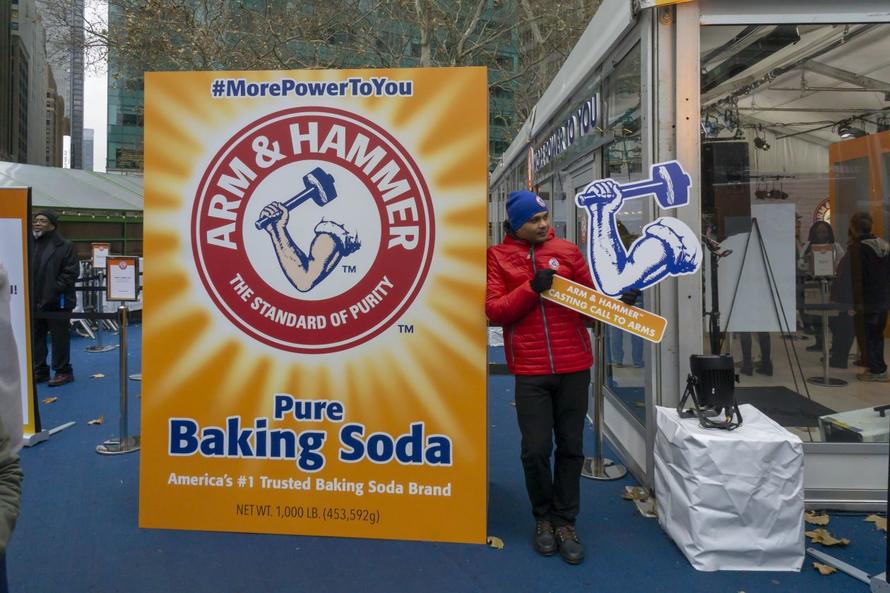After finding they could largely get away with raising prices last year, makers of household staples are planning another round of inflationary price hikes in order to offset higher commodity costs and boost profits, according to the Wall Street Journal.
Unsurprisingly, the price increases have been working out swimmingly for makers of consumer-goods, particularly for companies whose competitors have responded with their own price hikes, according to Wells Fargo Securities analyst Bonnie Herzog.
According to an analysis of Nielsen data by Sanford C. Bernstein, US sales volumes of personal and household products declined 1.4% in January, while dollar sales of those products rose 0.7% in the same period – suggesting that the price increases are more than offsetting the decline. Meanwhile, a robust job market providing Americans with the largest annual wage increases since the end of the recession has boosted average hourly earnings for private-sector workers by 2.9% y/y; the most since January 2009.
Maker of Arm & Hammer products Church & Dwight recently increased its prices on 30% of its products – including baking soda, cat litter and OxiClean cleaning products, while Clorox raised prices on about half of its product portfolio last year – including their Glad trash bags and plastic wraps. Clorox attributed price hikes to a boost in profit margins in its most recent quarterly filing, yet because Glad’s competitors did not follow suit with higher prices of their own, the company experienced an overall sales decline in the period. The company most famous for bleach plans to boost spending on promotions in the near term to make up for the sagging sales, executives announced on Monday.
CEO Benno Dorer last week voiced confidence in Clorox’s pricing strategy over the long term, and the company expects to invest in new products. Higher prices for Kingsford charcoal and Burt’s Bees products went into effect in December and February, respectively. –WSJ
That said, while Clorox reports higher sales in other categories such as cat litter and bleach, there are limits to what people will pay.
Tyler Aftab, a 35-year-old teacher in Green Brook, N.J., said he noticed at his local Costco last week that Charmin and Bounty, which were normally under $18 last year, were both being sold for about $23. Glad trash bags, normally under $15, were listed at about $19.
Mr. Aftab bought the Glad kitchen bags discounted for under $16. He opted to buy Costco’s Kirkland Signature brand of paper towels instead of Bounty. He decided to not buy any toilet paper.
“I am a fairly loyal consumer of Charmin, but I will not pay $23 for the pack,” Mr. Aftab said. “I will wait until those prices come down.” –WSJ
Meanwhile, Procter & Gamble has been experimenting with price increases of its own on a rolling basis – from around 4% to 10% on products such as Puffs brands, Papers, Bounty and Charmin – which consumers can expect to see as soon as this month.
The price hikes led to an increase in organic sales, according to a January report by the company – “a closely watched metric that strips out currency moves, acquisitions and divestitures,” reports the Journal.
Church & Dwight CEO Matthew Farrell said last week that the company has been in discussions with retailers to raise prices on other products – including personal care items. According to the Associated Press, the price hikes will address the company’s lower than expected gross margin, which was attributed to “the household business growing faster than expected and U.S. tariffs, the impact of which has been addressed with the announcement of 2019 price increases.”
“The good news is that competitors are raising price in those categories as we speak,” said Farrell on a conference call last week.
Kimberly-Clark, whose portfolio of produicts includes Viva, Huggies, Cottonelle, Kleenex and Depend adult diapers, said last month that it expects volumes to suffer – especially with tissue products, after price increases averaging in the mid-to-high single digit percent range are expected to put a damper on sales. That said, the company expects organic sales to increase by 2% this year.
According to Bernstein analyst Ali Dibadj, copmpanies without a mix of migh and low-priced products won’t find it as easy to pull off price increases because price-sensitive customers may abandon their brands completely.
“The big fear is your pricing is too high and that consumers are just not going to come back to your brand.”
via ZeroHedge News http://bit.ly/2GJfyW3 Tyler Durden
